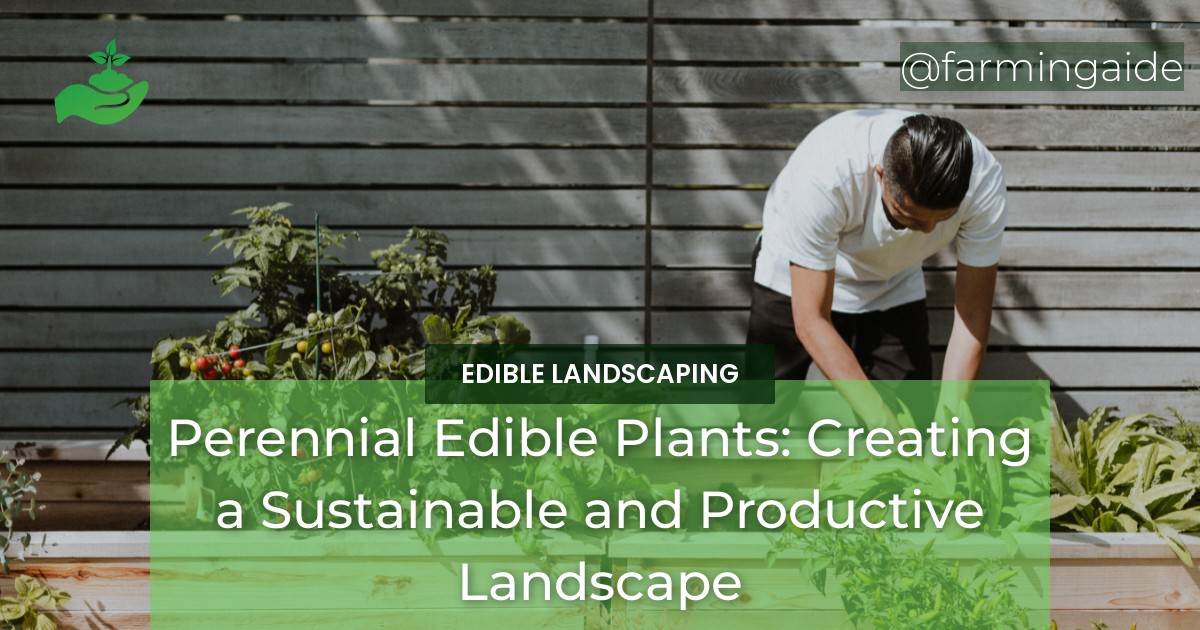Perennial Edible Plants: Creating a Sustainable and Productive Landscape
Creating a sustainable and productive landscape is a goal for many homeowners and gardeners. One way to achieve this is by incorporating perennial edible plants into the design. Perennial edible plants are plants that come back year after year, providing a consistent source of food and beauty. They offer numerous benefits, including increased food security and self-sufficiency, reduced environmental impact, financial savings, and low maintenance requirements.
Benefits of Perennial Edible Plants
By including perennial edible plants in your landscape, you can enhance food security and self-sufficiency. These plants provide a continuous supply of fresh fruits, vegetables, and herbs, reducing the dependence on grocery store produce. Additionally, perennial plants require less watering, fertilizing, and pest control compared to annual plants, resulting in reduced environmental impact and financial savings. Their low maintenance nature makes them ideal for busy individuals or those with limited gardening experience.
Selection of Long-lasting Edible Plants
When choosing perennial edible plants, it’s important to consider their suitability to your climate, soil type, and available space. Fruit trees, such as apple, pear, and cherry, are popular choices for their long lifespan and bountiful harvests. Berry bushes, like blueberries, raspberries, and blackberries, thrive in many regions and provide delicious fruits. Perennial vegetables, including asparagus, rhubarb, and artichokes, are excellent additions to any edible landscape.
Planning and Designing a Perennial Edible Landscape
In order to create an efficient and productive perennial edible landscape, several factors should be considered. First, analyze the available space and determine the optimal arrangement of plants. Incorporate different layers, such as canopy, understory, and ground cover, to maximize space utilization and create a diverse ecosystem. Intercropping and companion planting can further enhance the productivity of the landscape.
Care and Maintenance of Perennial Edible Plants
To ensure the health and productivity of your perennial edible plants, proper care and maintenance are essential. Regular pruning and training techniques, such as espaliering or trellising, help shape the plants and promote optimal growth. Fertilization and pest management strategies should be implemented according to the specific needs of each plant. Adequate watering and efficient irrigation systems are crucial to prevent water wastage and promote plant health.
Harvesting and Utilizing the Yield
Knowing when and how to harvest your perennial edible plants is vital for maximizing their yield. Each plant has its own requirements for harvesting, and it’s important to follow the proper techniques to ensure the best flavor and quality. Once harvested, the produce can be preserved and stored using various methods like canning, freezing, or drying. The yield can then be used in creative ways for cooking, baking, or making preserves.
Long-term Benefits and Considerations
Perennial edible plants offer long-term benefits beyond their immediate yield. They contribute to soil improvement and ecosystem health, promoting biodiversity and habitat creation. These plants are resilient and can withstand changing environmental conditions, providing a stable food source in the long run. Additionally, a well-designed and maintained edible landscape has the potential to generate income through the sale of surplus produce or value-added products.
Case Studies and Success Stories
There are numerous examples of successful perennial edible landscapes around the world. From urban rooftop gardens to community orchards, these landscapes demonstrate the potential for creating sustainable and productive spaces. Testimonials from individuals or communities who have implemented such landscapes can provide inspiration and practical insights for those interested in starting their own edible garden.
Conclusion
Perennial edible plants offer a multitude of benefits for creating sustainable and productive landscapes. By incorporating these plants into your garden design, you can increase food security, reduce environmental impact, and enjoy the beauty and abundance of nature’s bounty. With careful planning, proper care, and creative utilization of the yield, a perennial edible landscape can provide not only nourishment but also a sense of fulfillment and connection to the natural world.
RELATED ARTICLES:


